The Thermal Data
In a change from the 360mm thermal testing, all other radiator sizes are only going to be tested at 1.0 GPM. We proved that for 95% of the rads tested, flow rates over 1.0 GPM made did not make any significant impact on the radiator performance. The decision to only test at 1.0 GPM is also because of the time required to complete this testing, and running the additional flow rates effectively doubled the required test time.
A total of 6 tests were conducted at 1.0 GPM with fan speeds of 750 rpm, 1300 rpm and 1850 rpm being run in Push Only and Push/Pull. All up this testing still takes between 40 – 50 hours of logging time to get the results that are presented.
Below is the final data results gathered from at least 5 data logging runs at the flow rate and fan rpm combination. The most stable 15 minute period from each logging run was used and then averaged with the other runs to obtain the data for the table below. A total of 16 temperature sensors were used in the thermal test chamber (8 air in, 2 air out, 3 water in, 3 water out) each take a reading every second and logged via a CrystalFontz unit.
The data in the table below is the averaged results of the logging runs which has then been used to create all the plots and tables there-after.
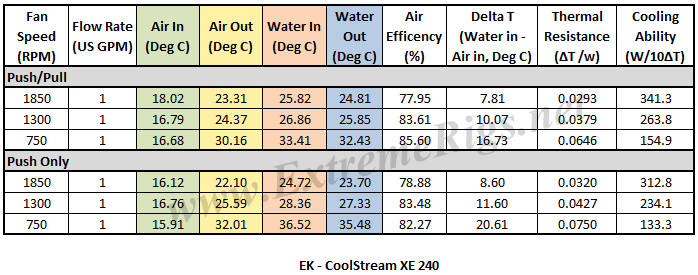 The performance metric of critical importance is the delta between the warm coolant temperature in and the cold ambient air temperature in to the radiator. Given that the system is well insulated and in equilibrium and we know the heat input to the system then we can also calculate a very important number – that is the amount of power required to raise the coolant temperature 1C (or 10C which is a more useful reference point).
The performance metric of critical importance is the delta between the warm coolant temperature in and the cold ambient air temperature in to the radiator. Given that the system is well insulated and in equilibrium and we know the heat input to the system then we can also calculate a very important number – that is the amount of power required to raise the coolant temperature 1C (or 10C which is a more useful reference point).
Let’s take a look at the Delta T results from the tests. Note that the extrapolation of the curve is much more sensitive to error than in between the tested range.
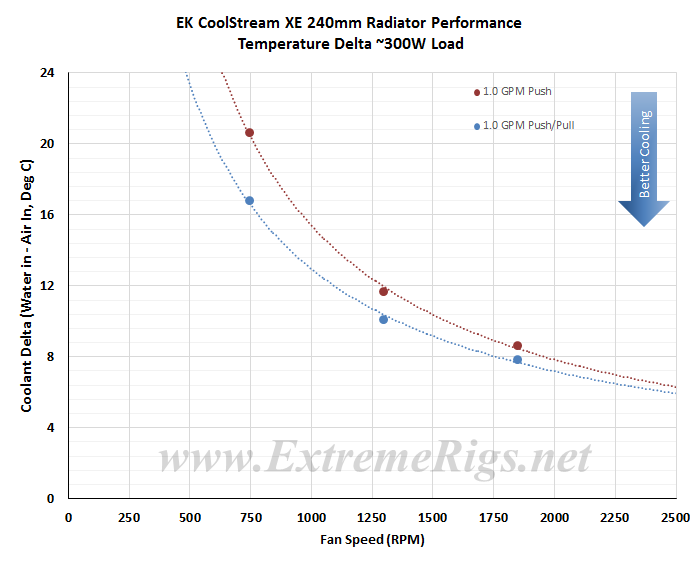 I was not too concerned about the actual delta numbers, more so the trend pattern, and as we should expect, the deltas come down significantly as the fan speed is increased.
I was not too concerned about the actual delta numbers, more so the trend pattern, and as we should expect, the deltas come down significantly as the fan speed is increased.
Delta T results (as above) is not always helpful when thinking about how many radiators you would need to cool your system. Instead it’s more useful to know the delta/W, or more usefully, the inverse metric of W/delta C. The metric plotted below tells us how many watts are dissipated by the radiator when the coolant rises 10C above ambient temperatures. (W/10 Delta T):
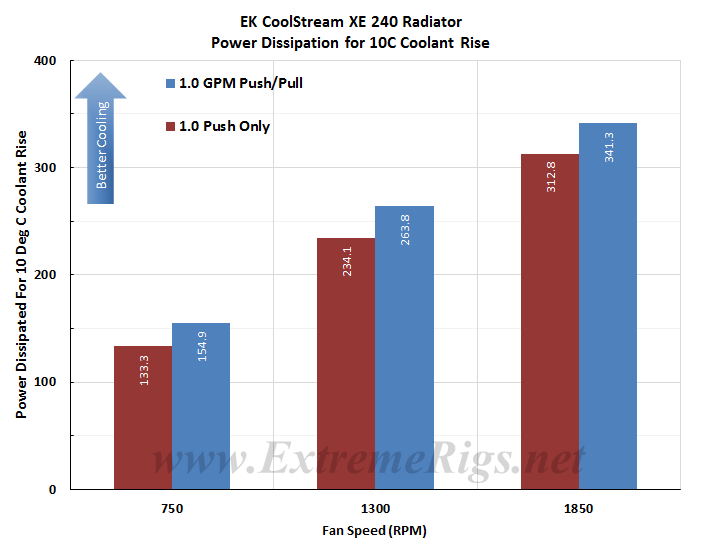 This same data can now be plotted on a chart so that an end user can interpolate their own fan speed. Note again that the extrapolation of the curve is much more sensitive to error than in between the tested range.
This same data can now be plotted on a chart so that an end user can interpolate their own fan speed. Note again that the extrapolation of the curve is much more sensitive to error than in between the tested range.
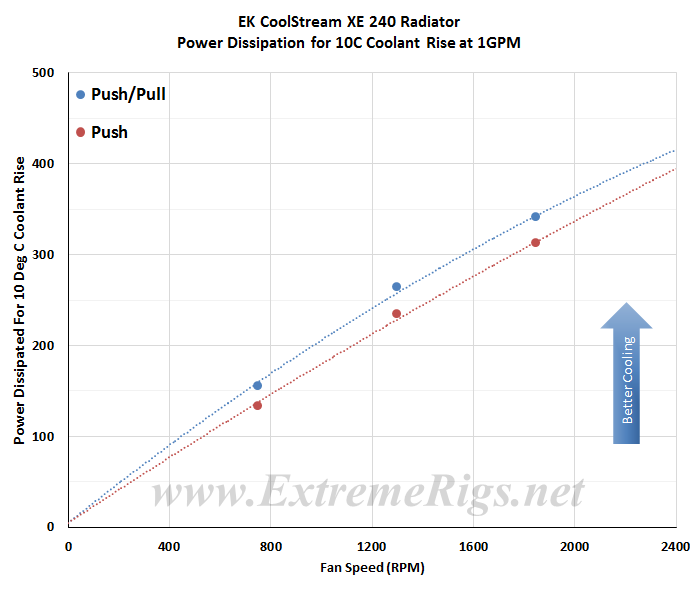 With the XE 240’s reasonably high fin count of 16 FPI and 46mm thick core, the Push Only results were slightly surprising and being higher than anticipated shows us that the XE 240 is a fantastic all round performer. Adding a second set of fans (Push/Pull) yielded an average performance increase of ~11%.
With the XE 240’s reasonably high fin count of 16 FPI and 46mm thick core, the Push Only results were slightly surprising and being higher than anticipated shows us that the XE 240 is a fantastic all round performer. Adding a second set of fans (Push/Pull) yielded an average performance increase of ~11%.
Now let’s analyze that data some more…








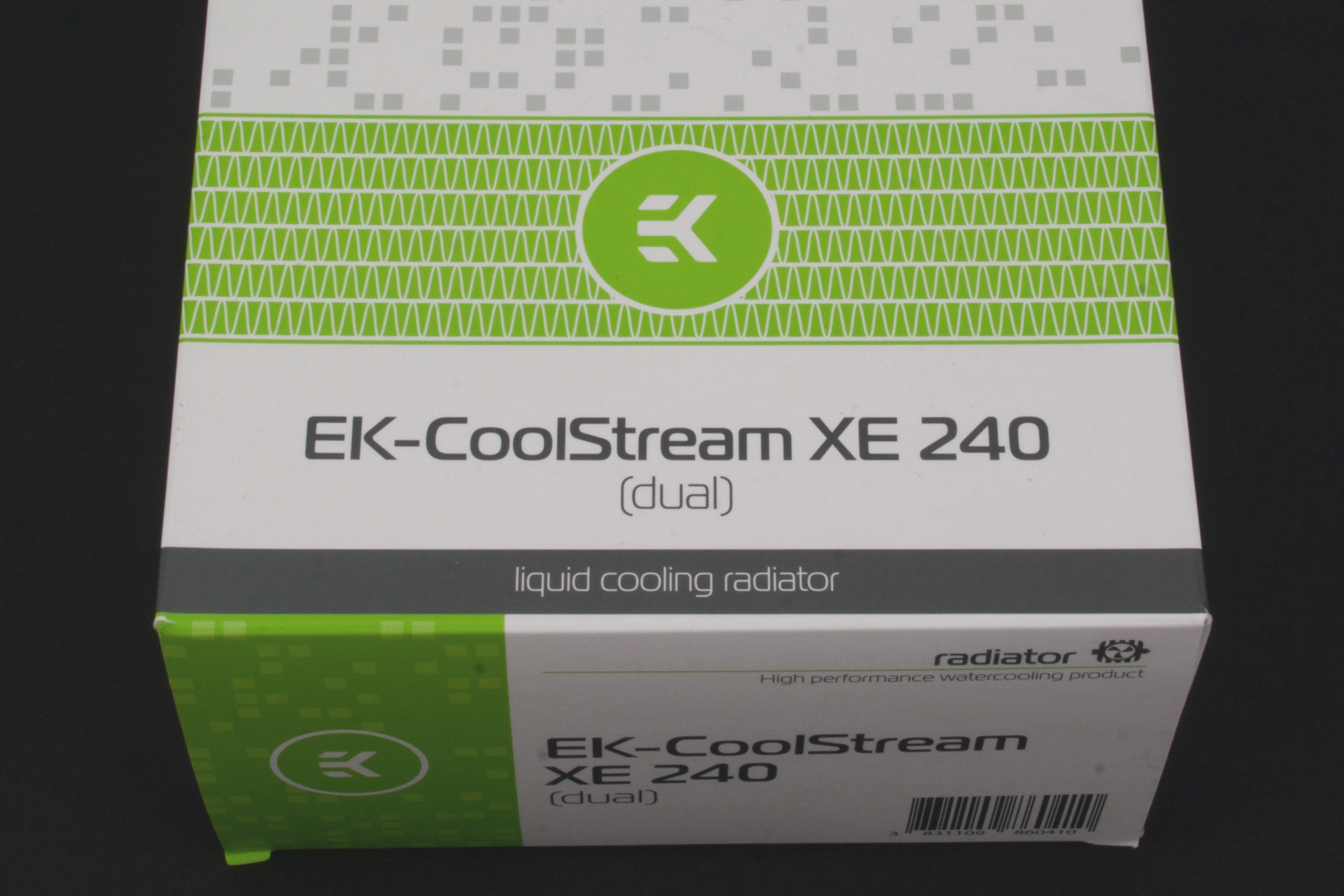




No reviewer out there has a summary of dual 280mm radiators!
You seem to be the only reviewer (great job BTW) who has some statistical data on the EK-CoolStream CE 280mm
Have been searching for comparative data against the nexXxos UT60 280mm.
Hopefully something turns up soon!
Thanks.
It’s been a while coming admittedly, but the first of our 280mm radiator reviews will be published tomorrow.
Comments are closed.